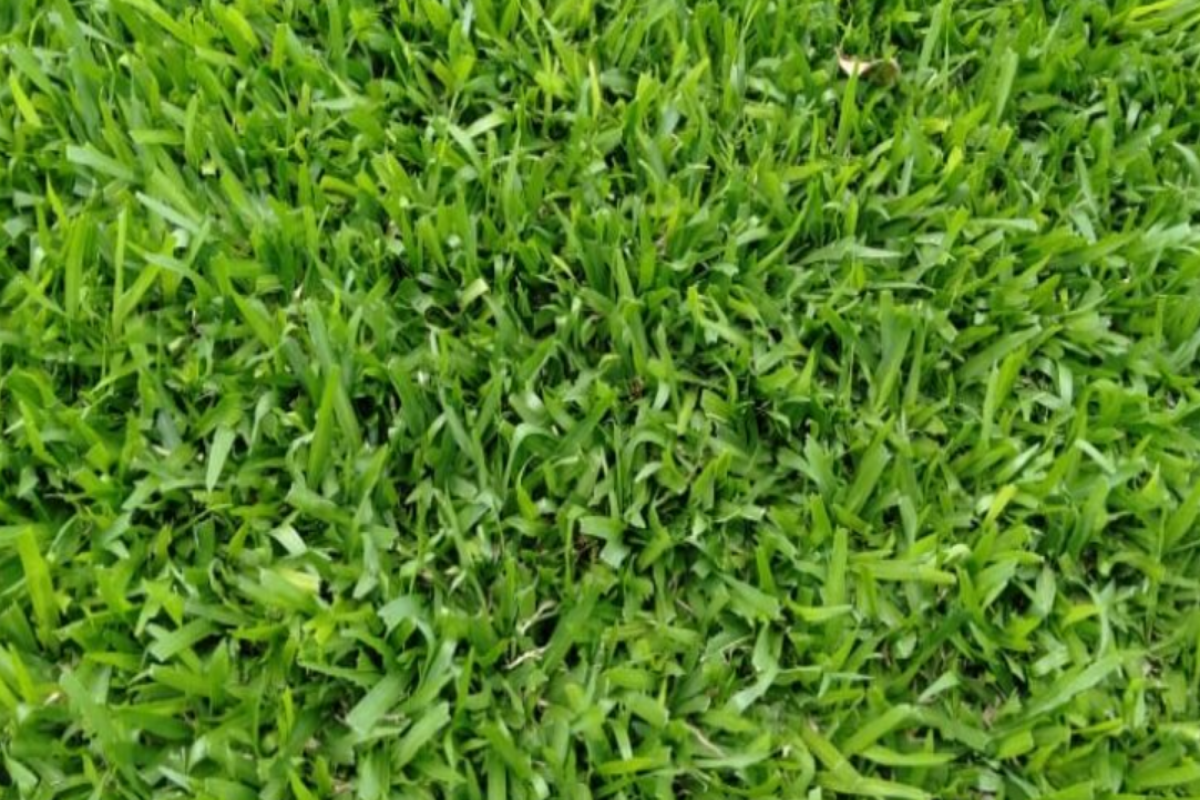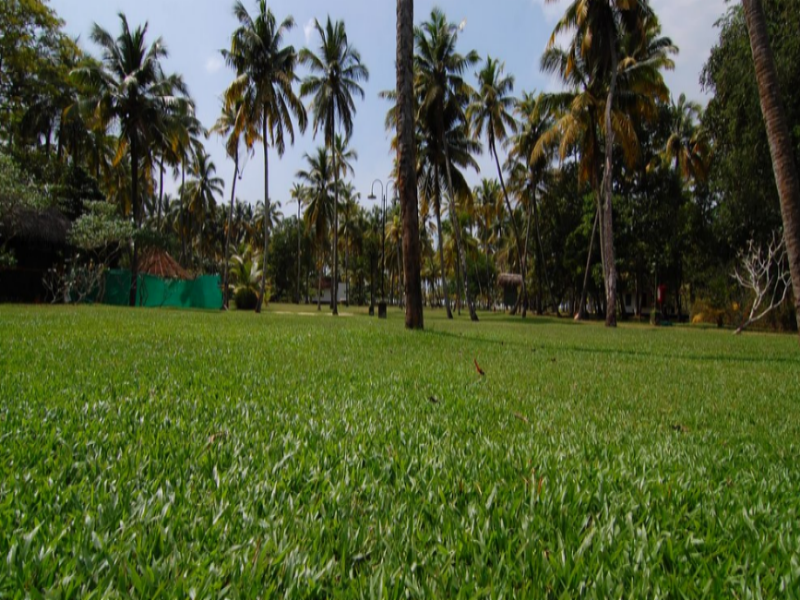Axonopus is a genus of low-growing grasses commonly found in tropical and subtropical regions. It currently includes over 75 species, such as Axonopus compressus, Axonopus singularis, and Axonopus fissifolius.

They can be identified by their dense, mat-forming growth, folded, broad, or flat leaves, and their inflorescence, consisting of spike-like racemes.
Axonopus Classification
- Domain: Eukaryota
- Kingdom: Plantae
- Phylum: Tracheophyta
- Subphylum: Angiospermae
- Class: Monocotyledonae
- Order: Poales
- Family: Poaceae
- Genus: Axonopus
- Common Names: Carpet Grass
Nativity and Distribution
The axonopus grasses are native to tropical and subtropical regions of the Americas, Africa, and Easter Island. These countries include:
- Argentina
- Brazil
- Cuba
- Kenya
- Uganda
- Nigeria
- Togo
- Caribbean Islands
- United States (in states such as Texas, Maryland, and Virginia)
Physical Characteristics

- Leaves: Alternate, folded, broad, or flat leaves with entire or slightly rough margins
- Fruits: Small, dry, tan-brown caryopsis
- Stems: Prostrate to ascending, often rooting at the nodes
- Flowers: Inflorescence consisting of spike-like racemes
- Roots: Fibrous root system
Axonopus is a genus of plants in the grass family (Poaceae) commonly found in tropical and subtropical regions. It currently includes over 75 species, such as Axonopus compressus, Axonopus singularis, and Axonopus fissifolius.
You can identify these grasses by their dense, mat-forming growth, folded, broad, or flat leaves, and their inflorescence, consisting of spike-like racemes.
The leaves are alternate, folded, broad, or flat leaves with entire or slightly rough margins. They are relatively short, about 5-15 cm long.
Stems are prostrate to ascending, typically rooting at the nodes. Their creeping stems exhibit a carpet-like growth, forming dense mats on the ground.
Carpetgrass produces inflorescence from the leaf axils, bearing elliptical, 2-3.5 mm long spike-like racemes. The spikelets are laterally compressed and generally consist of one bisexual and one sterile floret.
The caryopsis is small, dry, tan to pale-brown, about 1-2.5 mm long.
Reproduction, Dispersal, and Life Cycle
- Life Cycle: Perennial
- Seeds: Produces thousands of tall seed heads
- Climate: Tropical and subtropical climates
- Dispersal: Water and wind
Grasses in the Axonopus genus are perennial, thriving in tropical and subtropical climates. They produce seeds that are typically dispersed by wind and water to new areas.
Carpetgrass also reproduces by above-ground runners, which root at the nodes. Both methods are commonly used to propagate the grass, especially where it is grown as a turf.
This dual strategy also makes them aggressive weed colonizers, particularly in moist, fertile soils.
Uses

- The grasses are used for animal fodder.
- They are grown as a ground cover or turfgrass due to their high traffic tolerance and low maintenance requirements.
- They are used for weed suppression, dune stabilization, and erosion control.
Impact on Farms and Environment
Axonopus grasses are often used as a cover crop in farms such as coffee, rice, cashews, and citrus orchards. However, if left unchecked, the Axonopus species can become persistently weedy.
Their dense growth surrounds young plants, competing for vital resources, leading to poor yields and extensive economic losses.
Carpetgrass is a common weed of lawns, roadsides, and fields. Some species (like Axonopus fissifolius) can become invasive, especially in regions where they are non-native.
When grown in mixed pastures, the Axonopus grasses may also outcompete more nutritious forage species.
Overall, due to their rapid growth and hardy nature, they can colonize new areas quickly, suppressing native vegetation and negatively impacting biodiversity.
Control
- Cultural control: Intensive grazing can limit the spread and growth of several grasses.
- Mechanical Control: Hand-pulling and digging for small infestations in crop farms and ornamental landscapes
- Chemical control: Apply herbicides like glyphosate, paraquat, and 2,4-D
Axonopus grasses are highly palatable and, therefore, systematic intensive grazing can help deplete the grass in pastures and fields.
For small infestations in crop farms and landscape settings, hand-pulling can be a viable option for carpetgrass control. It’s vital to dig out the underground root fragments and dispose of them properly to prevent regrowth.
Chemical control measures vary based on the infestation area and level of spread. The most recommended herbicides for various settings include diuron, glyphosate, paraquat, 2,4-D, and dicamba.
We recommend consulting a local extension expert for the best advice on the product to use in your crop farm or lawn for effective carpetgrass control.

Lead Editor for Insight Weeds.